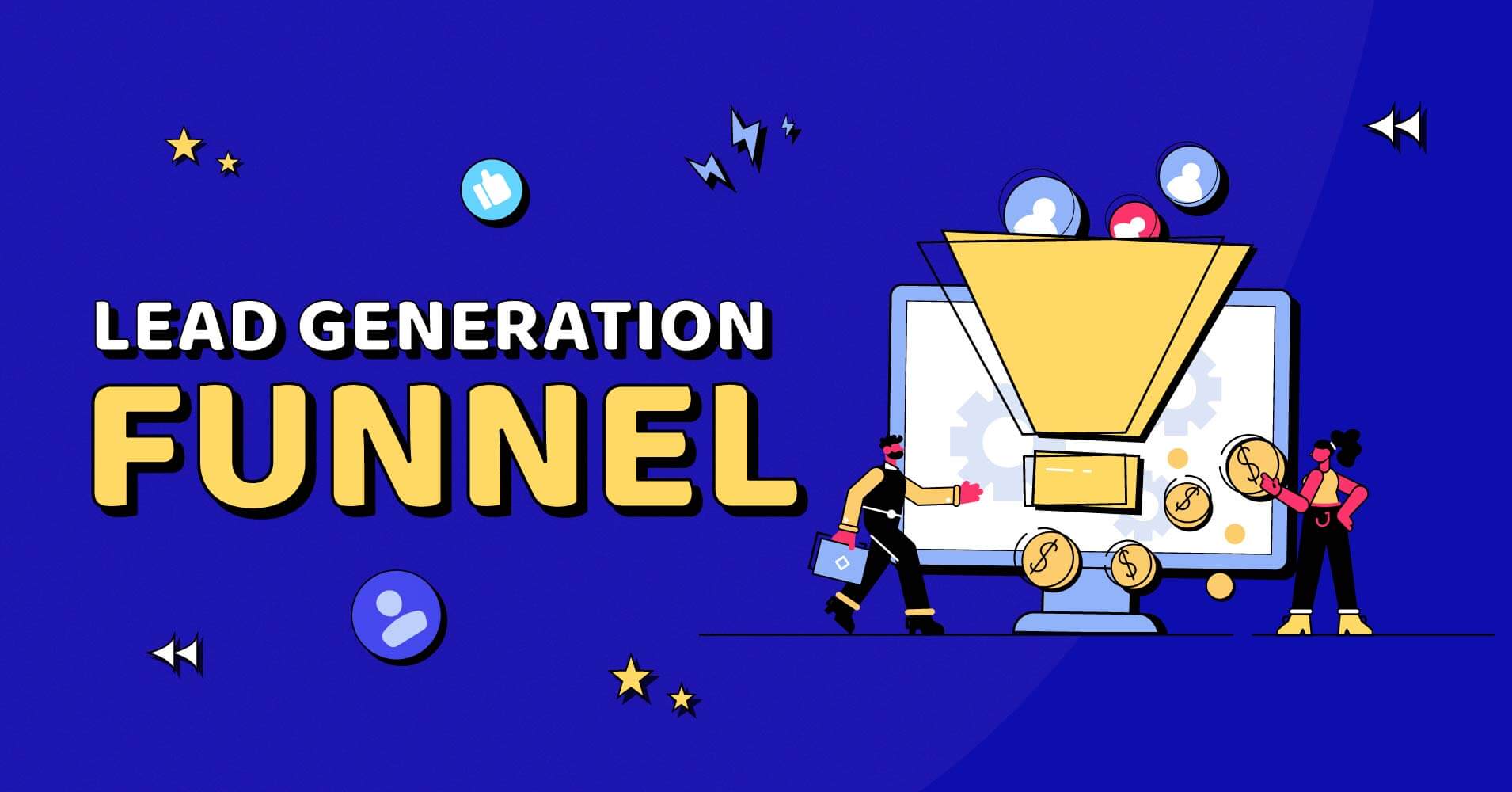
If you’re looking for a secret recipe to help your business grow and convert more leads into loyal customers, a proper and effective lead generation funnel can be the ultimate solution!
By cautiously crafting a series of steps that take potential customers from initial awareness to a final sale, a lead generation funnel ensures that every lead is nurtured and converted into a paying customer. It not only ensures an influx of new customers but also keeps them coming back for more.
Don’t worry if you’re new to the concept or have come here to renew your knowledge – we’ll go over every detail of the lead generation funnel in this blog. In addition, we’ll share some tried-and-true tips that you can adhere to for maximum impact.
So, let’s get started right away!
What is a Lead?
A lead is a potential customer or business who has shown interest in a company’s product or service, often by sharing their contact information. This marks the first step in the sales process, with the goal of lead generation being to convert these individuals into paying customers.
Imagine a visitor fills out a form on an e-commerce website to receive a 10% discount on their first purchase. By providing their email address, they become a lead, expressing interest in the company’s products and creating an opportunity for follow-up marketing to turn them into a customer.
Leads are essential for any company because a qualified and nurtured lead can become a long-term customer and a valuable source of recurring revenue. To succeed, you need an effective plan to find and handle leads, keep them engaged with useful content, and follow-up messages to guide them toward making a purchase.
Leads can come from a variety of sources, including website visits, referrals, trade shows, and advertising campaigns. Therefore it’s crucial to maintain a clear and effective lead generation funnel & consistently evaluate and improve it for a steady flow of leads from various channels
What is a Lead Generation Funnel?
Lead generation is a multi-step process businesses use to attract, engage, and convert potential customers into leads. The process begins by drawing the right audience to the company’s website or landing page and concludes with the desired conversion, such as signing up for a newsletter or requesting a demo.
For example, a software company might offer a free eBook on email marketing strategies in exchange for a visitor’s contact information. The visitor, now a lead, is nurtured with follow-up emails, eventually being converted into a paying customer.
In today’s online landscape, sales don’t happen overnight. It’s usually the result of a lot of hard work. And a well-designed lead generation funnel ensures that all of your efforts are directed in the right direction.
But keep in mind that B2B lead generation funnel and B2C lead generation funnel aren’t completely the same. B2B leads are businesses or organizations and B2C leads are individual customers. When comparing B2B leads with B2C leads, the volume might be lower but the potential value is higher!
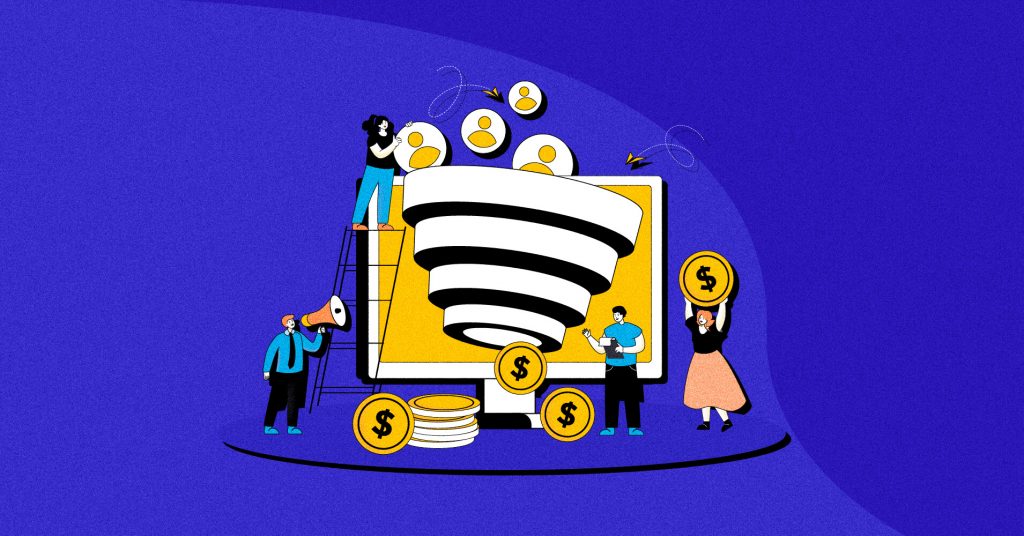
So basically a lead generation funnel is a series of actions divided into distinct stages where each stage is intended to bring a customer or business one step closer to the final action.
For example, in the awareness stage, the goal is to attract website visitors and introduce them to the business and its offerings, the focus is on engaging the visitors with relevant content to build trust and convert the leads into prospects.
So, a lead generation funnel is an essential component of any business, and your entire sales effort will be futile without a proper lead generation strategy for each stage. You must have a well-organized strategy in place to move prospects through each stage of the funnel, building trust and establishing a relationship with them until they are ready to buy.
Stages of a Lead Generation Funnel
A lead generation funnel is typically made up of several stages that a potential customer must go through before becoming a customer. These stages are intended to establish a relationship with the prospective customer and move them closer to purchase.
The following are the four common steps of a lead generation funnel:
- Awareness: In this stage, the potential customer learns about the company and its offerings through various marketing channels such as search engines, social media, or advertising
- Interest: The goal of this stage is to establish trust while involving the potential customer with relevant content like email campaigns, blog posts, social media engagement, etc.
- Desire: At this point, the focus is on presenting a compelling offer that meets the needs of the potential customer. This could be in the form of a free trial, demo, or special discount
- Action: It’s the final stage where the potential customer becomes a lead by taking action, such as filling out a form, making a purchase, or signing up for a service
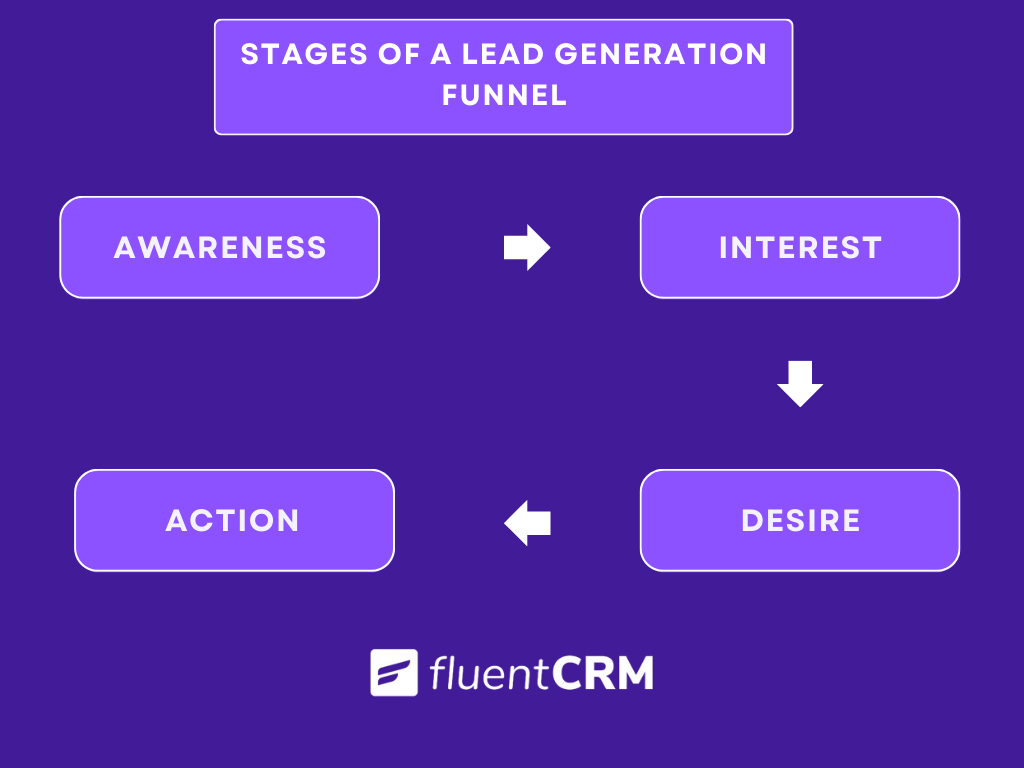
Now let’s take a look at how a sales funnel works for a better understanding. A sales funnel is typically divided into three sections based on the qualification of a potential client. They are as follows:
- Lead: A lead is someone who has reached the awareness stage. He has come to your door looking for a solution. Now, it’s your turn to offer them a solution, win them over, introduce them to your business, and move them on to the consideration stage.
- Prospect: When a lead reaches the consideration stage, he becomes your prospect. Now it’s your turn to change gears! You make direct contact with him and concentrate on building a long-term relationship with him. You influence his purchasing decision and showcase how your product or service is a perfect solution.
- Customer: This is the stage at which the prospect decides to pay for your product and services and make a purchase. The sales funnel comes to an end at this stage.
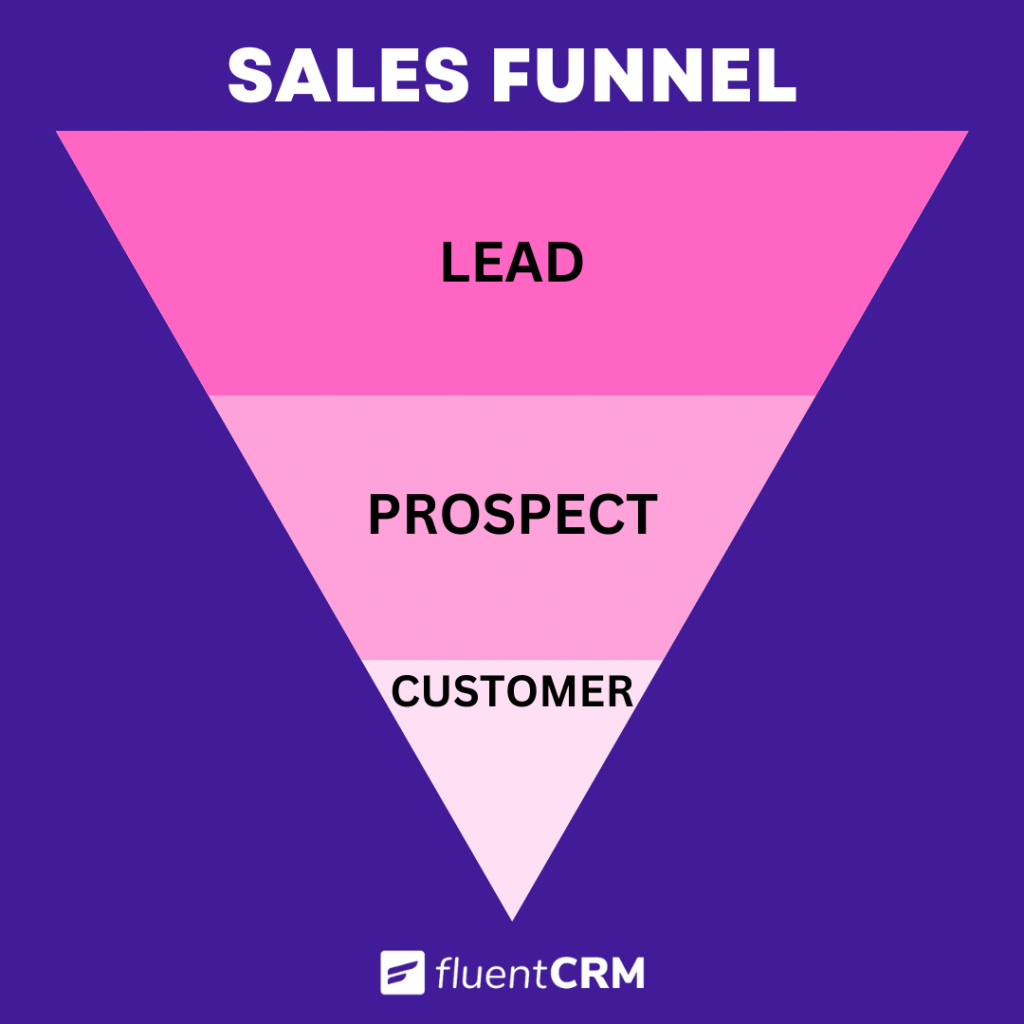
So, now that we understand how a sales funnel works and which stages each lead goes through, we can divide the funnel into three sections. And if we do, we can sum up a lead funnel as follows:
- Top of the funnel (TOFU): It’s where everything starts. There are a large number of leads at this point, and they are all in the awareness stage. Your job is to deliver lead magnets and capture attention.
- Middle of the funnel (MOFU): At this stage, the number of leads is lower than at the previous stage, but all of them are qualified. This portion of the funnel primarily consists of the interest and desire stages of the customer. You’ll spark the flame of interest with your product’s value and highlight benefits.
- Bottom of the funnel (BOFU): The final and most important stage, in which a lead is converted into a paying customer and you begin to witness the ultimate fruit of your efforts. This section contains the action stage of a lead.
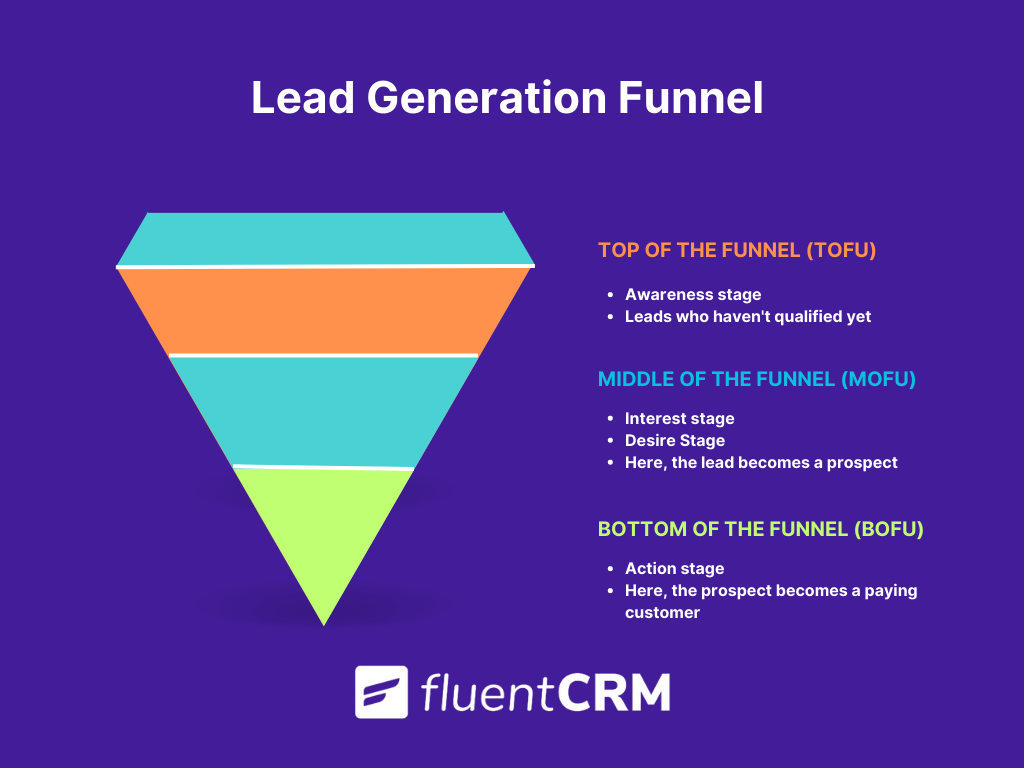
Remember that these stages are equally important & if you overlap any of them or ignore any of them, you are putting all of your efforts at risk.
How Does a Lead Generation Funnel Work?
As previously stated, a sale occurs as a result of many dedicated and effective efforts. And it is unnecessary to mention that the center of it is a lead generation funnel. Here’s how it works:
- The funnel begins with attracting the right audience to the company’s website or landing pages. Identification of the target audience is the most critical aspect of this stage.
- Upon visiting the website, the funnel moves to the engagement stage, where trust is built through valuable content. It creates the groundwork for the next stage by offering a compelling solution like a free trial or demo to meet customer needs.
- The funnel’s final stage is the action stage, in which the potential customer converts to a lead by taking action, such as filling out a form or making a purchase. It’s where the customer’s information is collected & stored for future follow-up and nurturing.
The lead generation funnel is an iterative process, and businesses must constantly analyze and refine their strategy to increase conversion rates. The more efficiently your lead generation funnel operates, the more opportunities for profit earnings emerge!
How to Build a Lead Generation Funnel?

Setting up an effective lead generation funnel necessitates careful planning and execution. It isn’t rocket science! All that is required is a dedicated and proper process.
Here are some effective steps to assist you in developing a lead generation funnel:
Define Your Target Market
Begin by determining who your ideal customer is, what their needs are, and what they are searching for. This data will assist you in tailoring your messaging and offers to entice the right people.
Your rivals are the best mentors when it comes to identifying your potential clients! Examine how they’re doing things and what’s missing!
However, if you don’t have any clear idea about your target, then all your efforts might end up scattered and ineffective. So it’s crucial to identify the target audience for your business to reach them and convert them into leads.
Discover the power of market segmentation to identify your target market!
Determine Your Marketing Channels
The digital world is vast, and when you begin planning your lead generation funnel, you may feel overwhelmed by the number of potential opportunities. However, keep in mind that not all of these marketing channels are suitable for you, and you simply cannot target them all at once!
Set your priorities first and decide which channels, such as SEO, content marketing, email marketing, social media marketing, or advertising, you will use to attract potential customers to your website.
Develop a Landing Page
Since your landing page is the first point of contact with potential customers, make sure it is crystal clear, concise, and conversion-optimized. Remember, in this digital world, first impressions are everything, and your landing page is the first thing your audience encounters. So make sure you greet them with a positive vibe rather than appear unprofessional.
Create an Email List
It goes without saying that email marketing is the most important component, and in order to maximize its effectiveness, you must first build your own email list. Therefore, remember to gather email addresses from potential clients so that you can guide them through your funnel and keep them informed of relevant info.
Follow these proven tips to build an email list from scratch:
- Add a pop-up CTA to every page on your site
- Craft personalized CTAs for each blog or landing page
- Consider using a scroll box
- Place an opt-in form within your navigation or footer
- Add a newsletter subscription option
Make Meaningful Offers
Who doesn’t want to be treated special? It’s basic human nature, and a personalized offer can accomplish much more than a generic approach. Therefore, make an offer that will excite your potential customers. If you want to convince people to sign up then you need to show them value. Provide value to them with irresistible offers, such as solutions, free trials, demos, or special discounts.
Take Care of Your Leads
It’s essential to keep nurturing leads as they progress through the buying process and get closer to making a purchase. Make an effort to create content for each stage of a lead generation funnel. Furthermore, don’t forget to engage in some personal interaction and communication with them.
By following the steps outlined above, you can build a lead generation funnel that is effective and efficient at generating high-quality leads and expanding your customer base.
The Value of a Good Lead Generation Funnel
A lead generation funnel enables businesses to generate high-quality leads, cultivate relationships with potential clients, and expand their clientele. Also, it has a long-term impact on your company and brand value.
Here are some of the most important advantages of a well-designed lead generation funnel:
- Efficiency boost: A lead generation funnel streamlines the procedure for drawing in and converting leads, making it more effective and efficient
- Better targeting: Using a lead generation funnel enables companies to customize their messaging and offers to target the right audience and attract the right customers
- Increased conversion rates: A properly constructed funnel can greatly increase the number of leads that turn into paying customers, generating more revenue
- Improved customer experience: A lead generation funnel gives potential customers a seamless and personalized experience, improving their overall impression of the company
- Increased brand awareness: A lead generation funnel can assist businesses in increasing brand awareness and reaching a larger audience
- Better information and insights: A lead generation funnel provides valuable insights into prospective customers’ actions and preferences, guiding businesses to make informed decisions and continually improve their lead generation efforts
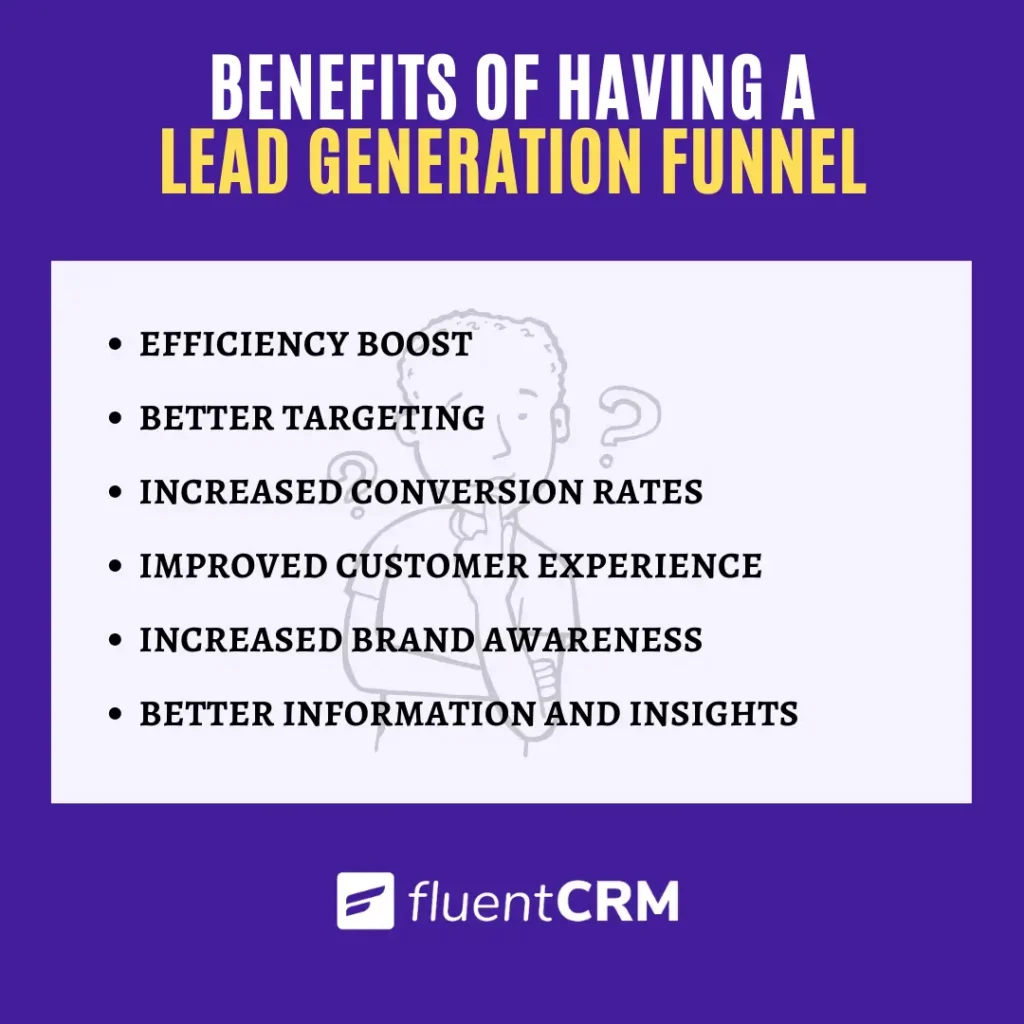
10 Proven Strategies to Optimize Your Lead Generation Efforts
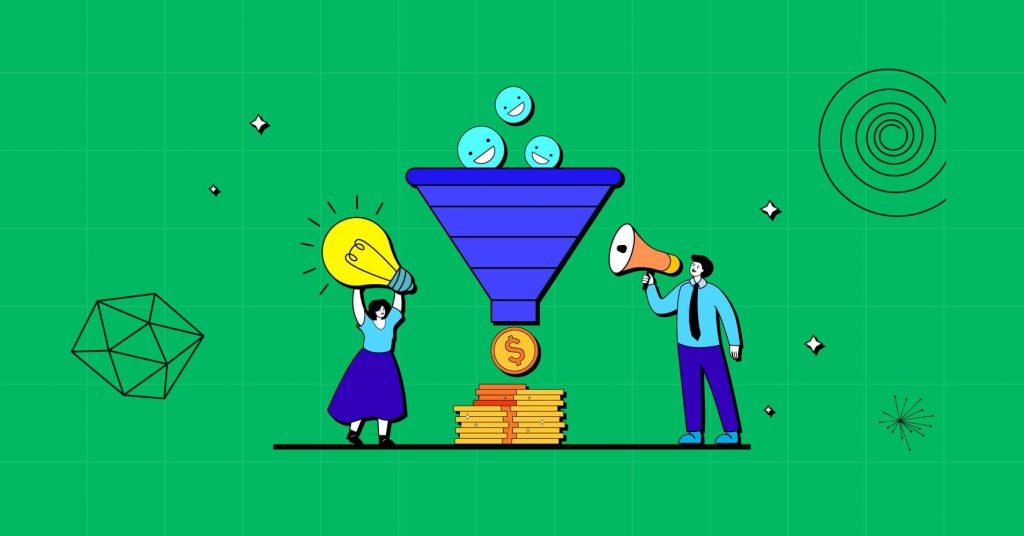
If fire is the most important human invention that has altered the course of human history, then constantly changing business psychology is the key that keeps evolution going!
Naturally, lead generation has advanced alongside business philosophy. But what is the most effective lead generation strategy?
Well, lead generation, however, is not a chapter in the Bible that requires you to adhere rigidly to any one process; rather, every tactic that is effective is the best tactic!
It is entirely dependent on your comprehension and implementation. Here are a few basic and tried-and-true strategies to get you started:
- Offer valuable lead magnets: Offer relevant, valuable lead magnets—such as an e-book, template, free trial, etc. —in exchange for contact information
- Optimize your landing pages: After clicking your ad or social media post, ensure your landing page and website are optimized for potential customers
- Use targeted advertising: Target your advertising based on specific audience interests, habits, and demographics to reach people who will be interested in your product/service
- Use social media to generate leads: Maintain a strong social media presence on platforms relevant to your target audience & share useful content, interact with target audience, and drive traffic to your website.
- Use proper SEO techniques: SEO is your key to reaching potential leads and propelling your company to new heights. A strong SEO lead generation strategy can make the difference between success and failure.
- Create content for each stage: Content marketing is a highly effective lead-generation tactic. So plan and execute your content marketing strategy for each lead generation stage.
- Employ email marketing: Email marketing is a great way to collect leads, nurture them, and keep them interested in your brand. Don’t forget to use an effective marketing automation tool to make it easier for you.
- Use Video for Lead Generation: Humans get more attracted to visual and dynamic content so try to create engaging lead generation-oriented videos that immediately attract your clients and meet their needs.
- Organize a referral program: Referral programs can be a good way to get new leads. Give your current customers a discount or other incentive in exchange for the recommendations of their friends and family to your company.
- Attend events and host them: Don’t forget to attend and host events to boost lead generation and build relationships with potential clients
These are just a few ideas for boosting your lead-generation efforts. But keep in mind that you are in charge of your business, and your process and implementation will determine how fruitful your lead generation efforts are. So, never be afraid to experiment and discover what works best for your company and its audience.
Discover more powerful tips for lead generation
Build Funnels That Convert!
The lead generation funnel is a crucial component of any effective marketing strategy. Businesses can significantly increase their chances of converting leads into paying clients by taking a systematic approach to identifying and nurturing potential customers.
We attempted to shed light on all aspects of a lead generation funnel in this article and to educate you on some of the best approaches. We hope it will assist you in creating an effective lead-generation funnel.
Remember that it’s all about experimenting with various strategies. So, don’t be afraid to try new things and keep a close eye on various metrics so that you can constantly refine your approach and improve your results.
That’s all for now. Have a wonderful day!

-
Thank you for this awesome post! Your insights into lead generation marketing strategy were super helpful for me. I’ve been needing guidance in this area, and I’m so glad you covered it. Your content is really valuable, and I appreciate you taking the time to share your knowledge. Looking forward to more posts like these!



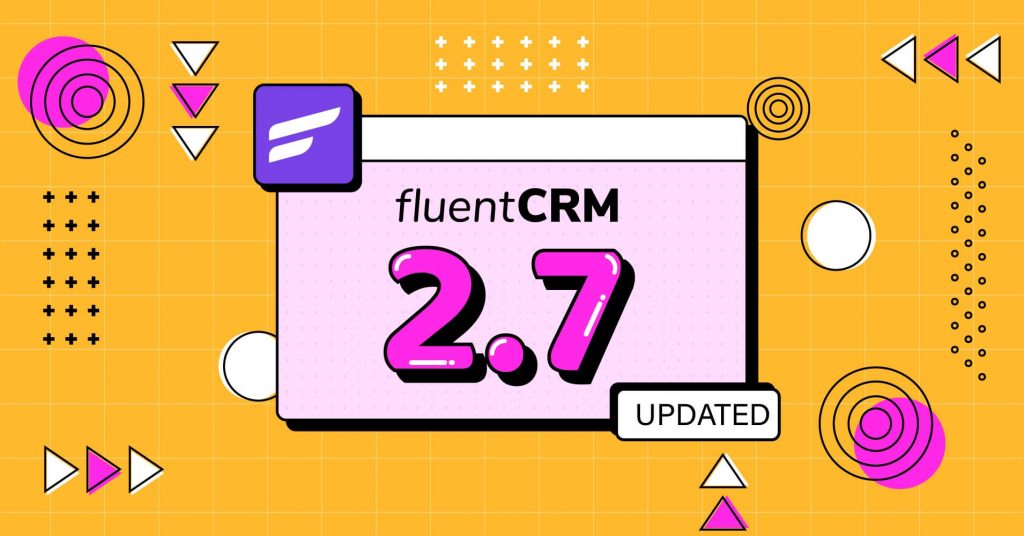
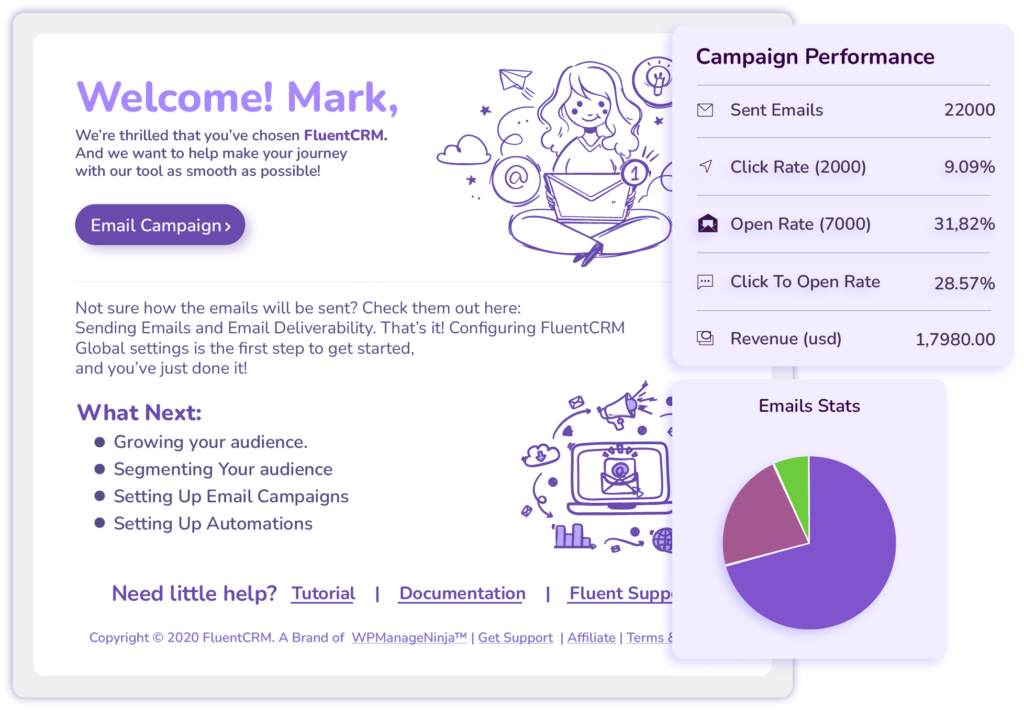



Leave a Reply